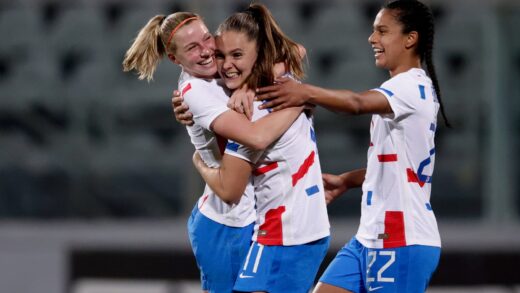The 2023/24 season is reaching its final stages and while some of the problems which reared their heads early on have been tackled, one aspect that continues to frustrate many is the allocation of fixtures.
The debate was fuelled following last week’s comments from the Malta Football Association Women’s Department that put the responsibility on coaches to rotate following changes in the organisation of the leagues. It sparked fury from a few clubs who have been consistently stretched thin by the calendar.
Specifically, it is that the allocation of fixtures does not take into account the fact that the majority of players are playing more than one league and that it is by extension limiting coaches from giving players enough time to recover, despite many of them aware of the need to do so.
As noted in an article published last week, discussing the new eligibility of some players to play in three leagues, the Assikura Women’s Youth League (U19) is played on Tuesdays and Wednesdays, the Assikura Women’s League (senior) is played Thursday to Saturday, while the BNF Women’s National League (U16) is played on Sundays.
There would be no problem if the pool of players were large enough that clubs had the numbers to field completely separate teams in the three leagues. However, reality is far from this, with the majority of clubs fielding young players in two leagues.
As discussed also in last week’s piece, there are two sides to fielding young players in more than one league. In some cases it is a means to an end. In other cases it is a thought-out process that aims to prepare a young player toward the reality at elite level, where twice-weekly fixtures are the norm. One simple example would be playing the domestic league alongside participation in the UEFA Women’s Champions League during the week.
Not A One Time Impossibility
Several teams have struggled to field players appropriately between the Assikura Women’s Youth League and the Assikura Women’s League, despite best intentions to rotate. This because of matches of the youth and senior team being scheduled to be played on Tuesday and Thursday, or Wednesday and Friday, resulting in just 48 hours between matches. Sometimes it may be unavoidable, but the recurring occurrence is jarring.
One example of this is last week’s fixtures for Valletta, who played the top of the table clash against Swieqi United in the Assikura Women’s Youth League on Tuesday and then played against Lija Athletic in the Assikura Women’s League on Thursday. Valletta is one club whose management specifically built their model on developing young players, with the plan that they play two matches per week to increase match practice. However, it is a team continuously getting punished for it.
To give some of the more recent examples, it also occurred against San Gwann the previous week where Valletta & San Gwann both played Assikura Women’s Youth League clashes on Tuesday and then faced each other on Thursday for the Assikura Women’s League match. Like Valletta, San Gwann is a team that consists of a young talent base who play in the two leagues and so has been subjected to a similar situation. San Gwann has a slightly larger senior base to accommodate such schedules, but coaches’ selections are still limited by the schedule.
This week presents another similar situation where Swieqi United and Birkirkara will meet in the Assikura Women’s Youth League tonight (Centenary Stadium, 20:00) and the two clubs also meet for the Assikura Women’s League top of the table clash on Thursday (Centenary Stadium, 20:15). Hibernians will also be a club having just 48 hours between the two matches, with the youth team playing on Wednesday (against San Gwann at 20:15, Charles Abela Stadium) and the senior team plays on Friday (against Mgarr United at 20:30, Victor Tedesco Stadium). Other clubs have been affected in similar ways, including Mtarfa.
With fixtures being set at 48 hour intervals so regularly, several coaches within these teams have argued that their hands are tied in balancing the playing times. Improved scheduling would also result in a better spectacle for those watching the matches. Fresher players are more capable to play at high-intensity until the end.
There is another rhetoric that is also usually floated in such discussions, which is that in times past players used to play back-to-back matches all the time. However, one must also compare the intensities of the matches played then to that of now.
Hanging In The Balance
Considering the administrative nature of scheduling, one aspect to consider is that fixtures are dealt with by the overarching Malta Football Association (MFA), not specifically by the Women’s Department in the MFA.
On the one hand, having a centralised approach allows the body to navigate the huge volume of fixtures that occur per week across all football leagues. On the other hand, the fact that these things continue to occur suggests that perhaps an improved or different approach is needed. Perhaps those scheduling fixtures need better or more resources to be able to handle the huge volume of fixtures and avoid such scenarios as much as possible. Certainly one must be more sensitive to the reality of the pool of players being so small.
Finally, it is true that coaches have the responsibility to rotate players and manage their load. This is something that coaches have been consistently probed about by The Sporting Fan in weekly questions prior to senior matches. More often than not it has been evident that the majority are well aware of the need to rotate to allow necessary recovery and have made selections and substitutions with this in mind. However, regular occurrences of 48 hours between matches, for teams without the depth to field two completely different sets of players, give the coaches no option. This is something that has been brought up as well in their responses to The Sporting Fan.
The responsibility of coaches to spread players’ minutes is certainly one side of the coin to this. However, the spreading of the fixtures of a particular club, to be able to give players the required rest while maximising match practice, is the other side. Hanging in the balance of the two are some of Malta’s brightest prospects.
Lead Image: Lara Schembri
Stay up to date by following The Sporting Fan on social media: Instagram ~ Facebook ~ X




5 Responses
[…] To mention just a few instances, it is evident that wounds from last year’s back-to-back Knockout finals are still open. It may be combined with those who were stepped on by the lack of fixture changes this year, including the disregard to the consistent pleas to avoid the short turnaround between youth and senior league. […]
[…] that make up a match, besides the teams participating in it. The move to weekend fixtures and the controversies that arose around the matches held on Thursday was already raised in earlier articles. It is something that will need to be re-assessed ahead of the upcoming […]
[…] this, the pleas raised last season for fixture schedules to consider the reality that several players play in at least two leagues still stand. The […]
[…] concerns have been already raised in the past to no avail. In fact, the first week of women’s football will mean that both Swieqi […]
[…] Fixture Allocation – The Other Side Of The Coin […]